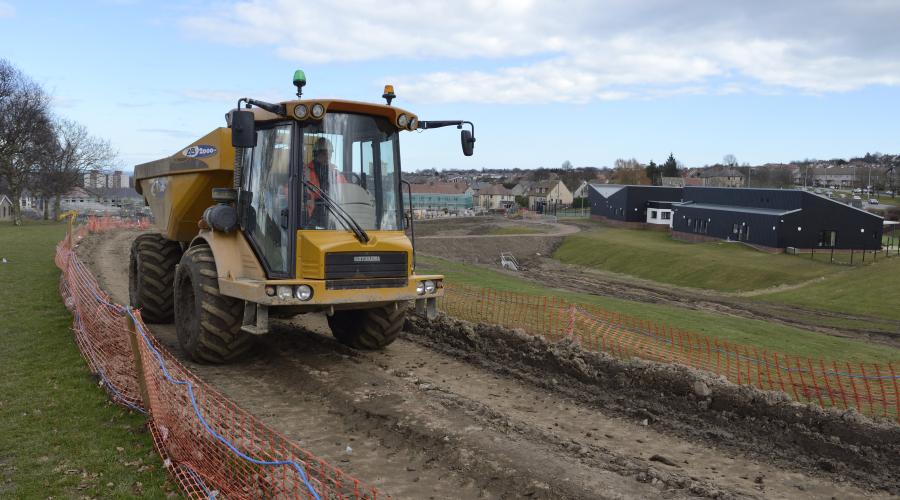
Development management and National Scenic Areas
A stricter development control regime applies in NSAs, and permitted development rights are more limited than elsewhere. We must be consulted on certain categories of development.
Below are lists of activities for which different rules apply within National Scenic Areas (NSAs) in regard to planning procedures. These rules are set out in Scottish Development Department (SDD) Circular 9/1987 and the General Permitted Development Order (GPDO) 1992 as amended.
For items under a. and b. below, Scottish Ministers must be notified of an application that a planning authority is minded to approve either:
- against NatureScot advice
- without the conditions we recommend
Ministers have 28 days (or such longer period as stated) to call-in the case or inform the planning authority to proceed to determination.
a. Activities requiring a planning application and consultation with NatureScot: [SDD Circular 9/1987]
- Schemes for five or more houses, flats or chalets except for those within towns and villages for which specific proposals have been made in an adopted local plan
- Sites for five or more mobile dwellings or caravans
- Erection of buildings and structures over 12m high
- All non-residential developments requiring more than 0.5 hectares of land
This direction does not create a requirement to apply for planning permission for the development listed in its Schedule 1 and located in a NSA, only that where there is such an application, the above consultation to NatureScot and potential notification requirements apply to the application.
b. Activities that are normally ‘permitted development’ but whose permitted development status is withdrawn, and which require a planning application and consultation with NatureScot: [SDD Circular 9/1987]
- Erection of agricultural and forestry buildings over 12m high
- The construction of vehicle tracks for agriculture or forestry purposes, except forestry tracks which are part of an approved forestry scheme
- All local authority roadworks outside present road boundaries costing more than £100,000
c. Activities that are normally permitted development but not in NSAs – therefore they require a planning application (but no statutory consultation with NatureScot). [from (GPDO) 1992 as amended]
- The installation of a microwave antenna on a chimney, wall or roof slope of a dwelling house which faces on to and is visible from a road. (Class 6)
- Development by statutory undertakers (involved in the generation, transmission or supply of electricity) for the installation or replacement of a telecommunications line, which connects any part of an electric line to any electrical plant or building, and the installation or replacement of any support for any such line. (Class 40(1)(b)
- Development by statutory undertakers (involved in the generation, transmission or supply of electricity) for the extension or alteration of buildings on operational land of the undertaking where the cubic content will increase by more than 10% and/or floor area would increase by more than 500 square metres. (Class 40(1)(d)
- Mineral exploration: drilling of boreholes, carrying out of seismic surveys, the making of other excavations during a period not exceeding 28 days (Class 53). (NOTE: a developer could carry out such an operation in an NSA under Class 54, but this requires the prior notification of the planning authority)
- The installation, replacement or alteration of electronic communications apparatus, and of structures, equipment or means of access which are ancillary to and reasonably required for the construction and subsequent use of equipment housing, UNLESS (i) it is carried out in an emergency (in which case it must be removed within six months of commencement or from when the need ceases, whichever is earlier), or (ii) it would result in there being not more than two small antennae (<50cm in any measurement) on a dwelling house neither of which faces onto a road, or (iii) it involves the installation of new overhead lines supported by existing poles. (Class 67)
- The installation, replacement or alteration on any building or other structure of an antenna and any structure intended for the support of any antenna (a) if it would result in more than two microwave antennas, (b) if it is located on a chimney, wall or roof slope which faces onto and is visible from a road, (c) if more than one of the antenna exceeds 60cm in length, (d) if any microwave antenna that exceeds 60cm in length exceeds 100cm in length, or (e) if the building or structure on which the antenna is located is over 15m in height, the highest part of the antenna or its supporting structure is higher than the highest part of the structure. (Class 68)
- The installation, alteration or replacement on any building or other structure of a closed circuit television camera for security purposes. (Class 72)
- NB: In addition, for development by or on behalf of the Crown for national security purposes in, on, over or under Crown land consisting of the installation, replacement or alteration of any electronic communications apparatus or development ancillary to radio equipment housing, prior notice should be given to owners or tenants of that land. (except in an emergency) (Class 94)



